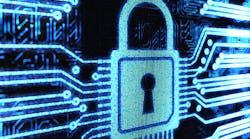Open Standards Will Enable the IoT’s Growth
You hear a lot about the Internet of Things (IoT) these days. It’s a phrase so white-hot that it’s far beyond the realm of a mere buzzword. But how do you define the IoT? Is it a refrigerator that can text you when you’re low on milk? Smart baby diapers? Connected cars? Connected cows?1 What is it, exactly? And why are standards even part of the conversation?
A good first step is to think about what we mean when we talk about the IoT. At its heart, it is the disruptive convergence of technology, telecommunications, data, and people. It is the humanization of technology, the melding of disparate elements and systems into a unified platform, allowing us to connect more deeply with one another and the world around us. But most of all, the IoT is an opportunity, a chance to make better choices based on these interconnections, improving the quality of not only our own lives, but society as a whole.
Connected things all share five key components: the need for smarter power consumption, storage, and management; the need for stronger safeguards for privacy and security; high-performance microcontrollers (MCUs); sensors and actuators; and the ability to communicate. Without them, all governed by standards, there will be no IoT.
Power Storage, and Management
By Cisco Systems’ estimate, there will be some 50 billion IoT-connected devices by 2020.2 Even if those 50 billion things consumed only 10 mW each, that still adds up to needing more than 500 MW just to power the IoT of tomorrow.
With such a staggering demand for power, every possible measure must be taken to minimize consumption and maximize energy efficiency. Leveraging ultra-low-power designs, thin-film energy storage, harvesting of ambient energy, and advanced power-management techniques to supply power only when and where needed will be critical considerations.
Privacy and Security
Think about the variety of connected devices that could be—and, in some cases, already have been—hacked. The list ranges from the ordinary (lightbulbs, televisions), to the silly (toilets), to the downright scary (baby monitors, connected cars). With its multitude of connected devices and system, for hackers, the IoT could be like being a kid in a candy store—so many tempting targets, so little time!
Changes to the information ecosystem are taking place at light speed. According to Evans Data Corp, more than 17% of the world’s software developers have already turned their attentions to the IoT, with 23% more expected to follow within six months.3 With this growing focus on the IoT, it is essential to see the need to defend the privacy and security of businesses and individuals alike.
Effective identity management, access control, and data protection and abstraction solutions must be introduced to prevent confidential information from falling into the wrong hands while simultaneously allowing information to be reused as appropriate and permitted by its owners.
The Brains of the IoT
MCUs are one of the most important elements in sustaining the continued advance and expansion of the IoT. With their ability to monitor, analyze, and react to environmental data, today’s generation of MCUs brings much needed intelligence to the smart devices and systems that form the IoT.
MCUs deliver meaningful and predictive analytics and data reduction. They also enable the management of data exposure through the application and maintenance of data models in support of applicable interaction models, all while minimizing power consumption and cost. Future generations of MCUs will see even greater intelligence embedded at every layer, better wireless connectivity, and more modularity and adaptability, further extending the IoT application horizon.
Sensors and Actuators
If MCUs are the brains of the IoT, then sensors and actuators are its nervous system. A small group of technologies with a big job, sensors and actuators work together to detect, gather, and measure data based on inputs and environment, and then act upon that data.
These sensors and actuators are being used in personal navigation devices to determine location based on the last known GPS coordinate and dead-reckoning calculations from sensor data; in intelligent thermostats that measure temperature and occupancy; in smart lighting that moderates output based on ambient conditions; and in remote health monitors to recognize warning signs or prescriptive actions.
MEMS are ideal for these applications—they benefit from the enormous scale of semiconductor manufacturing that allows the cost-effective production of thousands of identical chips on a wafer, while offering the extraordinary electrical and mechanical properties of silicon.
Communication
From collecting and sharing inputs to protecting data and monitoring link integrity, IoT systems and devices must be able to “talk” with one another—often using all available communication media to help ease connection/installation and roaming. At its base level, the IoT is about intelligent communication and interconnection—the ability of systems and devices to securely sample, collect, and analyze data, and then make link, protocol, or media selections based on stated requirements, all without human intervention.
The IoT also crosses a broad range of data rates, depending on the application. These rates could range from less than 1 kbit/s for environmental sensors and lighting control, to more than 100 kbits/s for industrial-control applications, to even higher rates in, say, video-monitoring apps.
It’s hard to imagine that a single communication technology can support all use cases and operate in all possible environments. For example, many electric meters around the world are connected to the utility network, using the same electric wires that deliver power. HomePlug Powerline communication technology (IEEE 1901 and IEEE 1901.2) transforms any power line into a communication cable. Wi-Fi (IEEE 802.11.x) offers a convenient form of connectivity for our smartphones and tablets. ZigBee (IEEE 802.15.4) is well known for its role in home automation.
Most likely, the IoT will leverage many communication technologies with the goal of delivering an “always on” experience while minimizing the power consumed by the IoT. There’s already a great example of the convergence specified in a fairly recent IEEE 1905.1 standard. It’s pretty easy to imagine how adding power consumption metrics can enable the IoT to select a communication path that’s not only the fastest, but also consumes the least amount of energy per transmission.
Standards: The Building Blocks of the IoT
With a clear definition of the IoT in place, answering the question of the role of standards becomes far easier. Standards are the building blocks that form the IoT’s foundation and ensure interoperability.
If Cisco’s estimate is even close to the mark, keeping in mind there are some who feel that 50 billion devices by 2020 is even on the low side, then it’s pretty clear that for the rapid adoption of the IoT, industry-wide agreements around the aforementioned components are crucial.
Creating wonderfully smart systems and devices will benefit no one if those things are unable to interoperate or communicate with one another. And with the IoT’s multifaceted nature allowing it to cross over many disciplines and vertical markets, laying a path to true convergence and interoperability must be a top priority.
The explosion in the number of IoT devices and applications now making their way to market means finding a way to build consensus around common architectures and infrastructures is vitally important. In other words, we must learn to walk before we can run.
One way to do this is through the development and adoption of open standards. A number of standardization projects have been launched recently, including IEEE’s own IEEE P2413, “IEEE Standard for an Architectural Framework for the Internet of Things (IoT)”.4
Each of these efforts shares a mutual goal: to take the multitude of discrete communications, processing, programming, and other protocols and approaches now competing to clog the IoT and turn them into a single, unified approach to developing its underlying foundational systems and infrastructures.
Any major technological shift (and the IoT may be among the most significant in history) starts with islands of innovation. It’s common for various groups to form industry alliances where members synergistically accelerate the progress that was already started by like-minded companies. But for these islands of innovation to become a vast landmass of the future technological landscape, these early activities have to transform into global standards enabling the economy of scale and vibrant ecosystems. We have many examples of such transformations, Zigbee/HomePlug/Wi-Fi activities in the Smart Energy Profile 2.0 area and IEEE 2030.5, among others. I believe that IEEE P2413 can become a great meeting place for many industry groups to join forces and enable our IoT future.
Developing a common core of open standards that include architectural frameworks, reference models, and data-abstraction blueprints—the building blocks of the IoT—will enable us to clearly define relationships among the IoT’s numerous vertical markets such as transportation, healthcare, and entertainment. In turn, this will help minimize industry and vertical market fragmentation, improve interoperability, and allow us to build IoT ecosystems that successfully and effectively leverage the power of all “things.”
References
1. “Brave Moo World: An Austin Company Explores the Internet of Cows,” Tim Ziegler, Austin Post.
2. “The Internet of Things,” Cisco Systems.
3. “Seventeen Percent of Developers Worldwide Now Targeting Internet of Things – New Evans Data Survey shows,” Evans Data Corp.
4. “P2413 – Standard for an Architectural Framework for the Internet of Things (IoT),” IEEE Standards Association.
Oleg Logvinov is the chair of the IEEE P2413 Standard for an Architectural Framework for the Internet of Things Working Group and director of special assignments in STMicroelectronics’ Industrial & Power Conversion Division. During the last 25 years, he has held various senior technical and executive management positions in the telecommunications and semiconductor industry. He currently serves on the IEEE Standards Association (IEEE-SA) Corporate Advisory Group and the IEEE-SA Standards Board. He has 19 patents to his credit and has been an invited speaker on multiple occasions. For more information or to join the IEEE P2413 Working Group, visit http://grouper.ieee.org/groups/2413.


